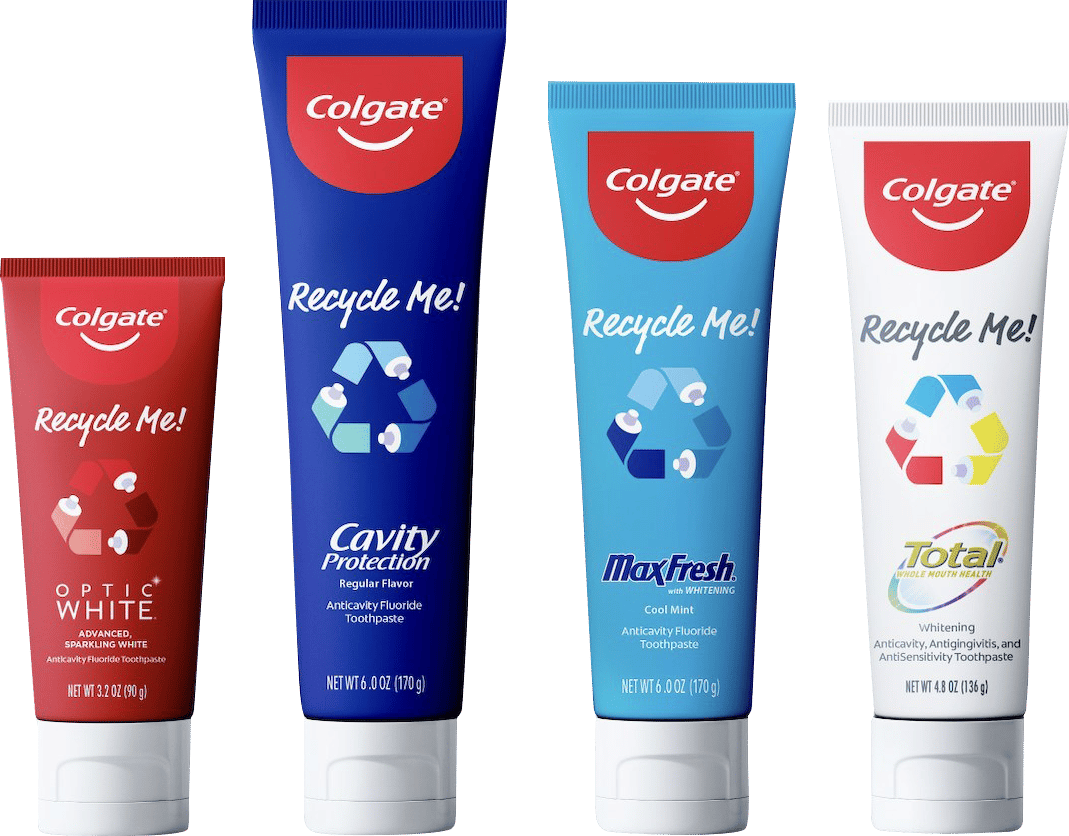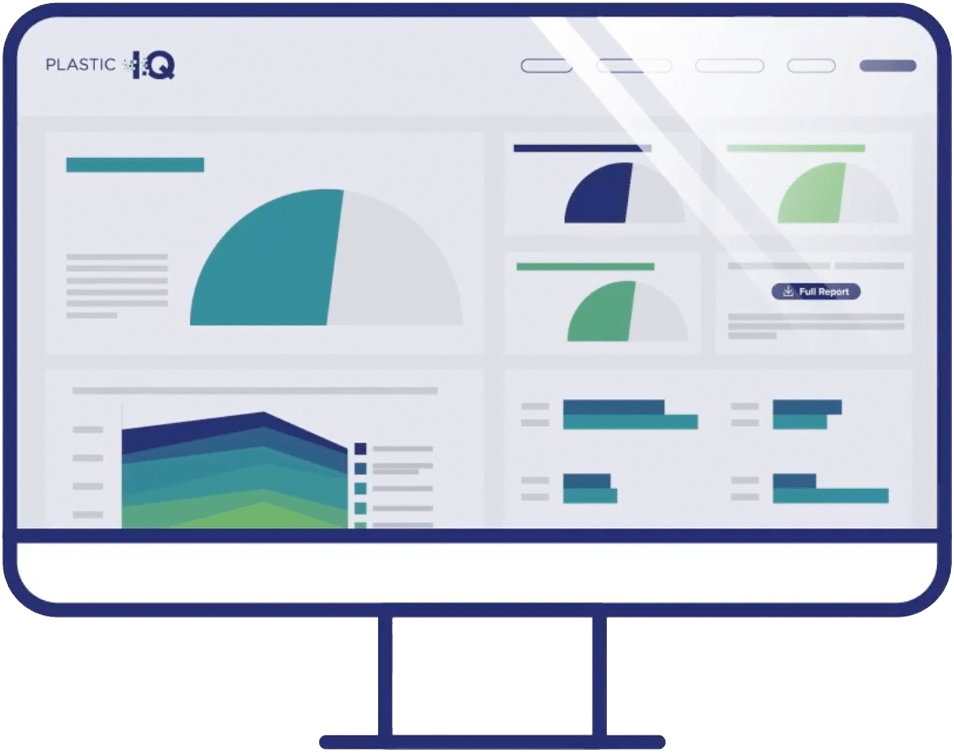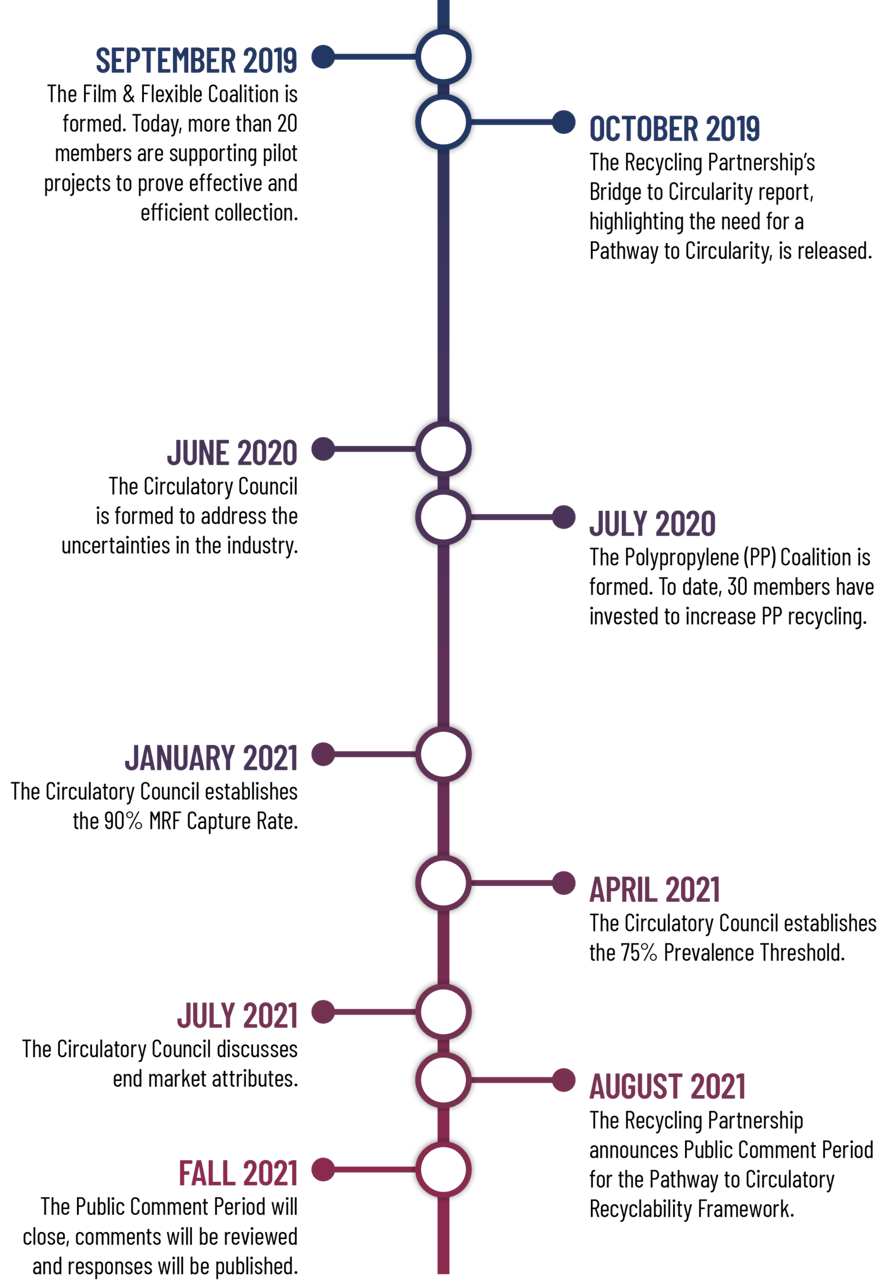
Circular PACKAGING

Designing for Circularity in Flexible Packaging Developments and new Pilot Programs
Colgate-Palmolive unleashes a new toothpaste pilot program that pushes for more recycling support within the flexible packaging and recycling industries, and how a resurgence of mechanical recycling from industry associations may be in the offing for 2022.
By Grant Gerke
The race is on with global brand owners as they transition to find flexible packaging formats with enough recycled content to meet their fast-approaching upcoming recycling mandates, 2022 regulations in Europe and get a handle on managing post-consumer recycled (PCR). The latter is an immense challenge since PCR supply is limited and new recycling technologies, like advanced recycling, have not fully scaled.
So, the flexible packaging segment is at an inflection point with recycled content. The good news is that more investments are being made into municipal recycling in the U.S.; more than $1 billion in investments was made before U.S. infrastructure Investment and Jobs Act of 2021 was passed late last year.
Plus, molecular or advanced recycling is further along in the commercialization process with many oil and gas companies looking to scale production by 2023 in the U.S. Last year, The American Chemistry Council cited $4.3 billion in investments for advanced recycling in the U.S, with many brand commitments for this nascent technology.
ADVERTISEMENT
So how is the flexible packaging segment responding to CPGs' current demands for information on design for recycling guidelines in 2022, and what products are brand owners unveiling to accelerate circular packaging?
One new tool aiding brand owners in designing for circularity is Plastic IQ, which was developed by The Recycling Partnership and SYSTEMIQ, and launched in May 2021. Plastic IQ is a free, digital strategy-building tool that allows U.S. companies to evaluate areas of highest environmental and economic impact with an eye on circular plastic packaging.
“For those companies just beginning their circular packaging journey, it can be difficult to realize where to focus and how to ensure choices are fully evaluated before making costly operational changes,” says Sarah Dearman, VP of circular ventures at The Recycling Partnership. Plastic IQ allows companies to upload baseline data to assess a brand’s current packaging portfolio, model solutions and build a customized actionable strategy to achieve packaging goals, scoring the effectiveness of a strategy and develop and submit actionable targets.
The design tool received support from Walmart and feedback from an advisory council of brands, retailers and non-governmental organizations. There is also a ”Catalyst” network that uses and encourages others to adopt Plastic IQ, including Colgate-Palmolive, Grove Collaborative, Happy Family Organics, J&J Consumer Health, Kellogg’s, Mondelez International, Nestle, P&G, Unilever, and the Pet Sustainability Coalition and The Sustainability Consortium.
In addition to the Plastic IQ tool, The Recycling Partnership focuses on improving municipal recycling, “putting private dollars to work in communities,” and advancing circular packaging, which includes forming materials-specific recycling coalitions for polypropylene, film and flexible packaging and PET.

Portfolio-Wide Analysis:
Effective Strategy
Innovative Solutions
Industry Best Practices
Plastic IQ allows companies to upload baseline data to assess a brand’s current packaging portfolio, model solutions and build a customized actionable strategy to achieve packaging goals.
Image courtesy of The Recycling Partnership
Single Source of Truth
With the demand for PCR content growing, the organization introduced the Circularity Council in June 2020 and established industry alignment on circular packaging assessment criteria, which was eventually called the Pathway to Circularity Recyclability Framework. The framework includes five pillars: access, capture, design, end markets and recycling prevalence.
“Advancing a package to be recyclable is currently complex and ambiguous, with no transparent national framework or specific guidelines in place,” says Ali Blandina director of circular ventures of The Recycling Partnership. “Clear, data-driven solutions are needed to evolve packaging design, modernize the system through strategic investment and instill public trust.”
The Pathway to Circularity Recyclability Framework and its five pillars’ objectives were announced throughout 2021, and a public comment period followed in August and September 2021 to record industry feedback on the initial draft. In December 2021, The Recycling Partnership shared those 750 comments from 70 stakeholders representing industry associations, brands, retailers, MRFs, government representations and NGOs.
The organization cited changes to the framework due to themes emerging from the public comment period. Suggestions included an enhanced focus on innovation, future inclusion of reuse and material health and the buildout of protocol to aid in the assessment. Public comment delved into the prevention of toxins from entering the recycling stream, building material health considerations into the “design” building block of the framework and different pillar labels.
For example, some public comments responded that the “design for recyclability” label is more accurate than “design for circularity.”
Other topics included post-consumer recycled content in the design for the circularity area and whether minimum requirements were needed. Industry comments included “stable, high quality supply is important and key; while ensuring package formats can be designed to utilize PCR content will help develop the market.”
One public comment mentioned his organization strongly supports the inclusion of PCR content as an “optional requirement and would strongly support setting minimum PCR standards by material types, and moving toward a mandatory PCR requirement in future revisions.”
The framework’s scope is clearly focused on municipal recycling and supports investment increases in this area. The organization also produced a recycling investment report and called for a $17 billion investment, with $3 billion going to new or upgraded material recovery facilities and $4 billion toward creating recycling solutions for film and flexible plastics.
“The Pathway to Circularity and coalitions will play a critical role going forward to advance package design, improve community access, help policymakers define what is recyclable, inform recyclability claims and drive new innovations,” says Dearman.

Recent developments by The Recycling Partnership, including the Films and Flexible Coalition that includes more than 20 members.
Source: The Recycling Partnership
Design Implications with Chemical Recycling
The rise of chemical recycling developments, plant commissions and development deals are well underway in Europe, Asia and the U.S. A report from ecoprog, called, “Trend Study — Chemical Recycling,” states that more than 90 projects for chemical recycling of plastics were in various stages of development worldwide at the end of 2021; more than 20 plants were in operation.
And in February 2022 ExxonMobil Chemical Company announced an agreement with Berry Plastics around its Exxtend chemical recycling feedstock that has been classified as a certified circular polymer for food applications via the International Sustainability and Carbon Certification Plus (ISCC) process. “The initial sale of certified circular polymers is based on plastic waste processed at ExxonMobil’s advanced recycling facility at its integrated site in Baytown, Texas,” according to ExxonMobil.
The Baytown facility began operations in 2021 and has already processed more than 4 million pounds of plastic waste.
Some forecasts, like Richard Freundlich, senior supply chain analyst at Rabobank, predict, “that the chemical industry footprint might quadruple in size by 2025 to 140 plants with a combined capacity of 3 to 4 million tons per year.
“There is a boom in the number of advanced plastic recycling plants being commissioned worldwide, and by 2025 the U.S. will lead the pack with this technology,” predicts Freundlich.
While many industry associations, such as Closed Loop Partners and the Sustainable Packaging Coalition, are consulting with major food brands on developments on chemical recycling advances, there are many unknowns with pyrolysis-based technologies because there are numerous technology patents that fall under the pyrolysis umbrella.
For instance, will companies scale chemical-based recycled feedstock for traditional multi-layer packaging structures or will oil and gas companies produce feedstock for just mono-material film or circular material?
Right now, Europe is saying yes to all of those material options as Mars recently produced a new retort package for its Sheba line of cat food that used a chemical-recycled based polypropylene (PP) flexible film via SABIC’s PP BCT copolymer. And the three-layer film, retort pouch structure produced by Huhtamaki Flexible Europe also includes PP, polyethylene terephthalate (PET) and aluminum foil.
The need to increase chemical recycling content seems apparent, as AMI Research reported that Europe only exceeded 8 million tons of recycled content in 2021 and an overall 23.1% mechanical recycling recovery rate.
AMI’s report identifies the COVID-19 pandemic as a key challenge in the low rates of recycling, but many regulators are looking past the pandemic and will start raising rates for some packaging segments that will be required to meet 30% recycled content in Europe. However, analysts are still concerned about recycled-content shortages due to sorting, workforce staffing issues and collection capacity with the COVID-related factors of social distancing.
The AMI report also points to rising contamination levels in the recycling process and revealed a 5% to 7% rise in PCB contamination in 2021.

Colgate-Palmolive recently announced that it’s developing a recycling pilot program and is seeking feedback from industry associations and municipal recycling organizations in objectively testing the quality of the tube material for inclusion in municipal recycling programs.
Image courtesy of Colgate-Palmolive
Adhesive and Lamination Solutions
One element that can be often overlooked in the recycled content conversation and circular packaging debate is laminates and transitioning toward solvent-free solutions. A recent webinar from Bostik, a supplier of adhesives and laminations, discussed the implications with mono materials for flexible packaging and provided information on what’s needed from a converting perspective.
“The industry needs to solve the (flexible packaging) recycling issue, and the way forward is redesigning the package and making film do the same performance but with a mono material,” says Wladimir Moraes, global marketing manager at Bostik.
Bostik introduced its SF10 solvent-free laminate last year, has been approved by the FDA and EU for food contact and has been tested in commercial applications with a range of mono-material and multi-material structures — including printed MDOPE-PE, BOPP-PE and printed PET-PE — to a name a few. Plus, the company cites the laminate is a drop-in solution that can work with existing printing presses and converting equipment.
Other suppliers are moving quickly too. In a recent Packaging Europe interview, Elizabeth Staab, Global Strategic marketing manager at H.B. Fuller discusses the trickle-down effect of designing for circularity.
“The recyclability of the primary packaging material is essential, so adhesives need to be formulated to facilitate this recycling process,” says Staab. “New materials such as paper straws or new designs such as multipack bundling, like KHS Nature MultiPack or GPI’s KeelClip demand completely new solutions and developments to fulfill the requisites of the new packs.”
New Approaches by CPGs
Colgate-Palmolive recently announced that it’s developing a recycling pilot program around its multiple product lines of Colgate toothpaste and is seeking feedback from industry associations and municipal recycling organizations in objectively testing the quality of the tube material for inclusion in municipal recycling programs. The tube is a high-density polyethylene #2 plastic that’s used for milk and detergent bottles and already displays the words “Recycle Me!” on the package to publicize to both consumers and industry peers.
“The Recycle Me! tube is designed to educate and engage consumers and the recycling community who are both essential to progress, and we are excited to initiate and learn from our upcoming pilot program," says Dana Medema, VP and VP of oral care for Colgate-Palmolive.
Colgate chose the HDPE bottle stream due its high recycling rate, approximately 30% in the U.S. The company said it “wasn’t easy to work with HDPE since the plastic is rigid and not well suited for squeezable tubes, but by combining different layers of HDPE laminate at varying thickness, Colgate engineers were able to produce a soft tube.”
More than 20 billion toothpaste tubes are not recycled each year. Flexible Packaging magazine reached out Colgate-Palmolive about the pilot project’s timeline or locations specifics, but no response was provided.
Lead image and background illustrations by linearcurves / DigitalVision Vectors via Getty Images and alenkadr / iStock via Getty Images Plus.
April 2022 // flexpackmag.com
